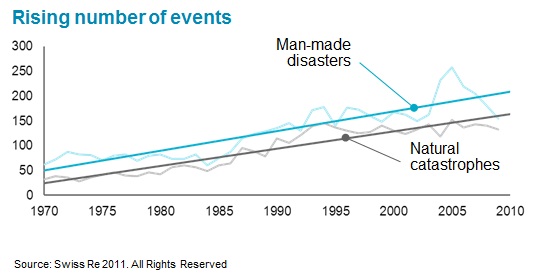The earthquake in Japan (March 2011), flooding in Thailand (October 2011) and the volcano in Iceland (April 2010) are just three examples.

Such events are prompting governments to re-consider how they prepare for large-scale disasters. "Innovation in Country Risk Management," by the Organization for Economic Cooperation and Development (OECD), in conjunction Oliver Wyman, outlines how on governments can improve coordination at the national, regional and local level. An inter-connected risk management approach is necessary to respond to risks such as natural disasters, major accidents, terrorism or a flu pandemic. One idea is to create a ‘Country Risk Officer’ function.
Increased cooperation with the private sector is also necessary. In many countries, over 80% of critical infrastructure is owned by the private sector. Extensive public-private cooperation is critical to improving risk awareness and risk management.
Download the full report to better understand how these governmental approaches may help your organization improve its business continuity planning.






